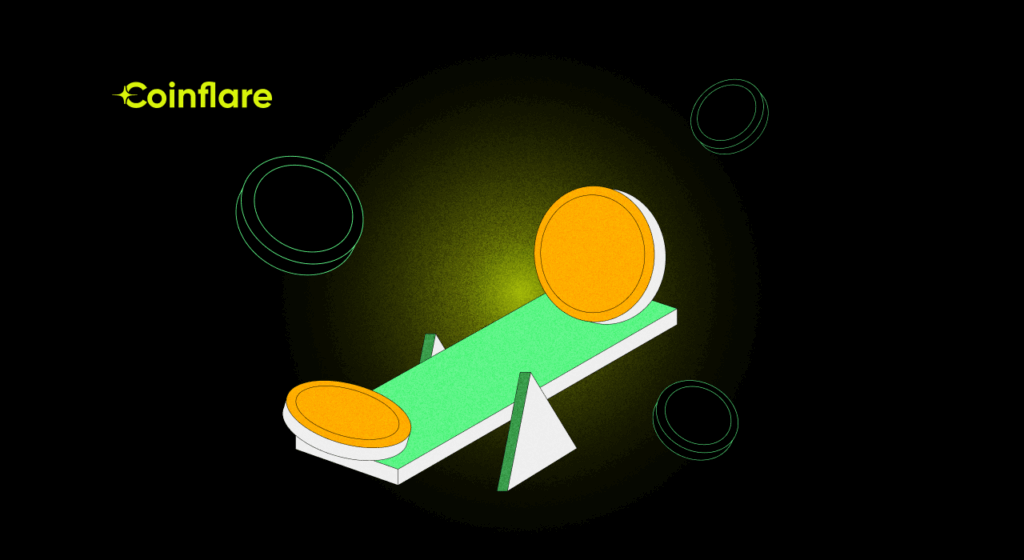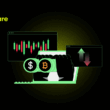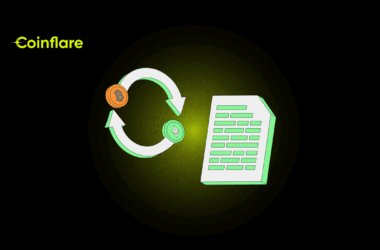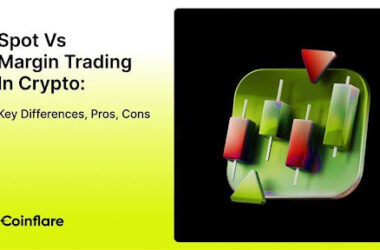Catalogue - Key Takeaways Show

Perpetual Swaps or Contracts for Difference (CFDs) are two renowned financial instruments which allow traders to speculate on price movements of various assets or cryptocurrencies, even including commodities, and indices from the traditional markets. As both instruments have keen similarities, they have also encompassed distinct characteristics. In this article, we will explore what perpetual swaps and CFDs are, how they work, and their benefits and risks.
What are Perpetual Swaps?
Perpetual swaps are a sort of derivative contract commonly used in cryptocurrency trading. They enable traders to speculate on future price movements of digital assets, without owning the underlying assets. They are also called Perpetual Crypto or Perps Crypto contracts. Perpetual swaps are designed in a way that they replicate features of traditional future contracts, with slight key differences. Unlike traditional futures contracts, perpetual swaps do not carry an expiration date, which means that traders can hold their positions indefinitely. With perpetual trading or (perp trading), many traders do not have to carry the risk of the asset falling in value, rather allow them to speculate on the price movements of the crypto asset and the “perps crypto contracts” associated with it. Hence perp trading short for perpetual trading, includes the buying and selling of perps’ crypto contracts, allowing traders to engage flexibly on the asset’s prices without expiration dates and keep on rolling them as long as they want to.
How Do Perpetual Swaps Work?
Perpetual swaps contain two parties: the long position holder and short position holder. Long position holder expects the price to soar and rise, whereas short position holder expects the price of an asset to plummet or decrease. The contract’s value is based upon the difference between the entry price and the exit price, multiplied by the contract size.
Example:
Let us consider that you want to trade Bitcoin using a perpetual swap contract. Bitcoin perpetual swap is designed to track the price of Bitcoin against the reference index.
Now assume that the price of Bitcoin is $50,000 and you believe that the price will increase. You decide to take the long position on Bitcoin Perpetual Swap, BTCUSDT-P. You open a trading account and deposit funds and allocate a certain amount of margin to open your position. Now let us assume that you allocate $5,000 as margin and the available leverage ratio offered by the exchange is 10x. With 10x leverage, you amplify your position ten times. So, your trading exposure is $50,000 with 10x leverage instead of the mere $5,000 allocated margin.
Let’s assume that the price of Bitcoin increases to $55,000. As you decided to take a long position, your trade is profitable. The profit you make is calculated based upon the difference between your entry price and exit price, multiplied with the leverage.
In this case, your profit would be ($55,000-$50,000) x 10 = $50,000.
On the contrary, if the price of Bitcoin had gone against your position and dropped to $45,000, you would have experienced a loss. The loss amount would be ($50,000-$45,000) x10 = $50,000.
It is important to note that perpetual swaps typically have funding fees linked with them.
Funding Rate Mechanism
A key feature of perpetual swaps is funding rate mechanism. Periodically, funding fees are exchanges between long and short positions to maintain the contract’s price close to the underlying asset’s spot price. This mechanism helps to prevent significant price disparities between the perpetual swap and underlying asset. When price of a perpetual swap contract is above the spot price of its underlying asset, the funding rate becomes positive. In this situation, long position holders pay a fee to short position holders. This is done to encourage more short positions and discourage more long position holders, and hence pulling the perpetual swap’s price at par with the spot price of underlying asset.
On the other hand, if the perpetual swap is trading below the spot price of its underlying asset, you will witness a negative funding rate. Traders holding short positions would be paying fee to long position holders. This would encourage the long position holders and discourage the short position holders to come at par with the spot price for the perpetual swap.
What Are Contracts for Difference (CFDs)?
Contracts for difference (CFDs) are financial derivatives that allow traders to speculate on the price movements of various assets without owing the underlying asset. CFDs are popular in traditional markets for trading, especially stocks, commodities, and indices. When trading CFDs, traders enter into an agreement with the broker or an exchange the difference in price of underlying asset in contract’s opening and closing positions.
CFDs allow the traders to go long (buy) or go for short (sell) on an asset, allowing them to profit from both rising and falling markets. Traders just like in the case of perpetual swaps, do not take ownership of the asset but speculate on the price movements. CFDs offer leverage, helping them enhance their positions by taking borrowed funds.
Difference Between Perpetual Swaps and CFDs
Both contract for difference (CFDs) and perpetual swaps are quite popular derivatives offering some leveraged exposure to various assets, including cryptocurrencies, commodities and stocks. As they look similar in the first glance, subtle yet it is crucial to know the differences between both derivatives. Therefore, understanding such nuances is vital to make informed decisions.
A striking difference lies in their structure. Perpetual swaps trade on centralised exchanges, copying traditional futures contracts without a defined expiry date. This means that positions can remain open for an indefinite time period and settlements can occur solely by swapping for the difference between the contract’s current and initial price. On the other hand, CFDs are called as bilateral contracts that are negotiated directly with a broker and can have some varying expiry dates depending on the underlying asset and broker terms.
Leverage is another determinant and a distinguishing factor. Both instruments offer significant leverage, but perpetual swaps generally boast high levels almost reaching up to 100x helping traders gain momentous gains and losses at the same time. CFD leverage on the other hand, offers potent and moderate returns, with capped leverage from 20 to 50x, depending on the brokers and prevailing regulations.
Settlements are also presenting a key difference. With perpetual swaps, funding payment occurs periodically to ensure that the contract’s price closely tracks the underlying asset’s spot price. These payments are exchanged between the long and short positions depending on the funding rate which can be positive or negative. In contrast, CFDs involve the direct settlement of price differences at the contract’s expiry or near closing. There are no periodic adjustments, thus it simplifies the process but there could be some minor discrepancies between the contract’s price and the underlying asset and its actual value.
These instruments are further distinguished by regulations. Perpetual swaps are still mostly unregulated outside some jurisdictions, but depending on the broker and area, CFDs are governed by more stringent regulations. Because of the licensing requirements and consumer safeguards put in place by regulatory bodies, this gives traders an additional layer of protection.
The cost structure of the two instruments varies, to sum up. Spreads between ask and bid prices are not present in perpetual swaps; instead, a fixed funding rate, either positive or negative, is usually assessed. Contrarily, CFDs are frequently bought and sold at prices that are higher than the market price of the underlying asset, resulting in a spread that is used to pay the broker’s commission. The computation of profit and loss for CFD trades may be impacted by this spread.
Perpetual swaps and CFDs can be chosen based on regulatory considerations, preferred trading environments, and personal risk tolerance. Higher leverage and endless exposure are features of perpetual swaps that attract seasoned traders accustomed to intricate workings and unavoidable volatility. CFDs may be a good fit for less seasoned traders looking for controlled leverage and exposure to a variety of assets because of their broader regulatory oversight and easier settlements.
Risks and Disadvantages
However, it is important to note that both perpetual swaps and CFDs come with inherent risks. Due to their leveraged nature, traders can experience losses when the market moves against their positions. It is crucial to understand risk management tools such as stop loss, leverage management, and the application of stop loss orders. Furthermore, regulatory landscapes of these instruments vary across different jurisdictions, hence it is important to note that traders must adhere to local regulations.
Conclusion
In conclusion, perpetual swaps and CFDs are popular financial instruments which allow traders to speculate and earn profits on price movements. While they offer opportunities, profit, and flexibility, they also carry risks associated with it. Traders must conduct thorough research, understand the mechanisms of these instruments, and develop potent risk management strategies before engaging in trading activities.
Coinflare
Coinflare, a leading cryptocurrency exchange offers users the option to trade cryptocurrencies with the help of Perpetual Swaps. Traders can gain access to a variety of perpetual swap contracts connected to various digital assets through Coinflare’s user-friendly interface. The platform offers sophisticated trading tools and real-time pricing information to enable seamless trading experiences. Additionally, Coinflare provides traders with competitive leverage options that allow them to enlarge their positions and boost their returns. To make sure that the perpetual swap prices closely follow the spot pricing for the underlying asset, Coinflare also uses a fair funding method. With its dependable and secure infrastructure, Coinflare enables traders to take part in the exciting world of perpetual swaps, maximising the potential for profit and portfolio diversification.
About Coinflare
Coinflare is a cryptocurrency exchange platform that offers traders a secure, easy-to-use, and convenient way to buy, sell and trade cryptocurrencies. Our platform has been designed with investors of all levels in mind, whether they are just starting out or experienced traders. We offer various features and tools to help users make the best trading decisions possible, including advanced charting and analytics, real-time market data, and various customisable trading interfaces. At Coinflare, we are dedicated to empowering our users and helping them reach their financial goals.
Stay in the loop about our launches, trading pair announcements, contests and more by following us on Discord, Telegram, and Twitter.









